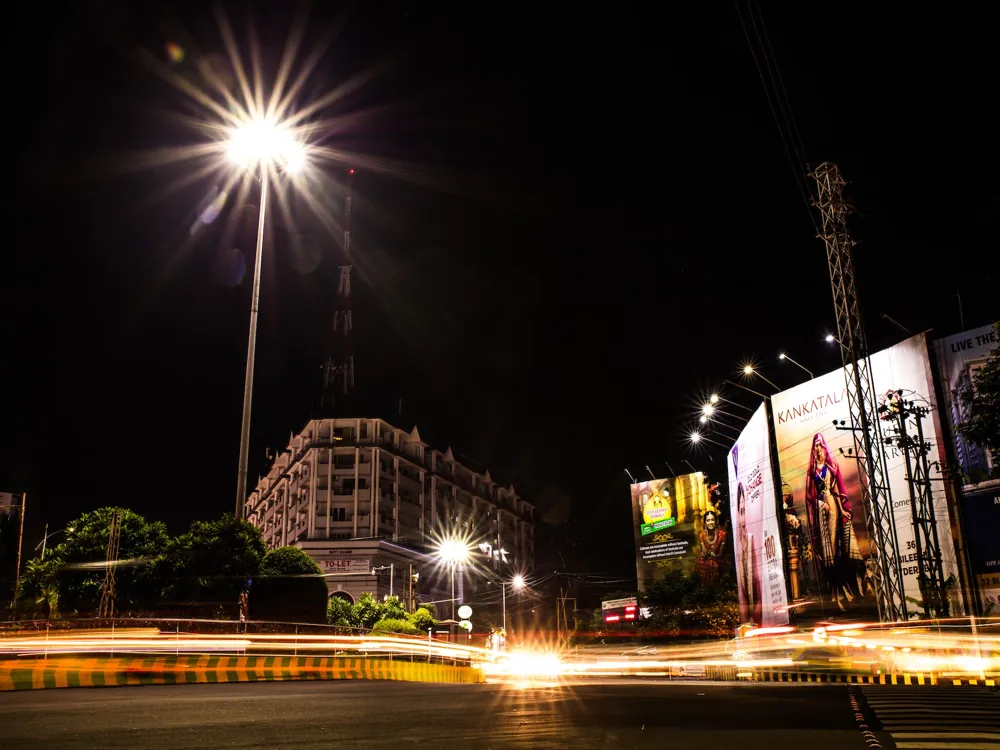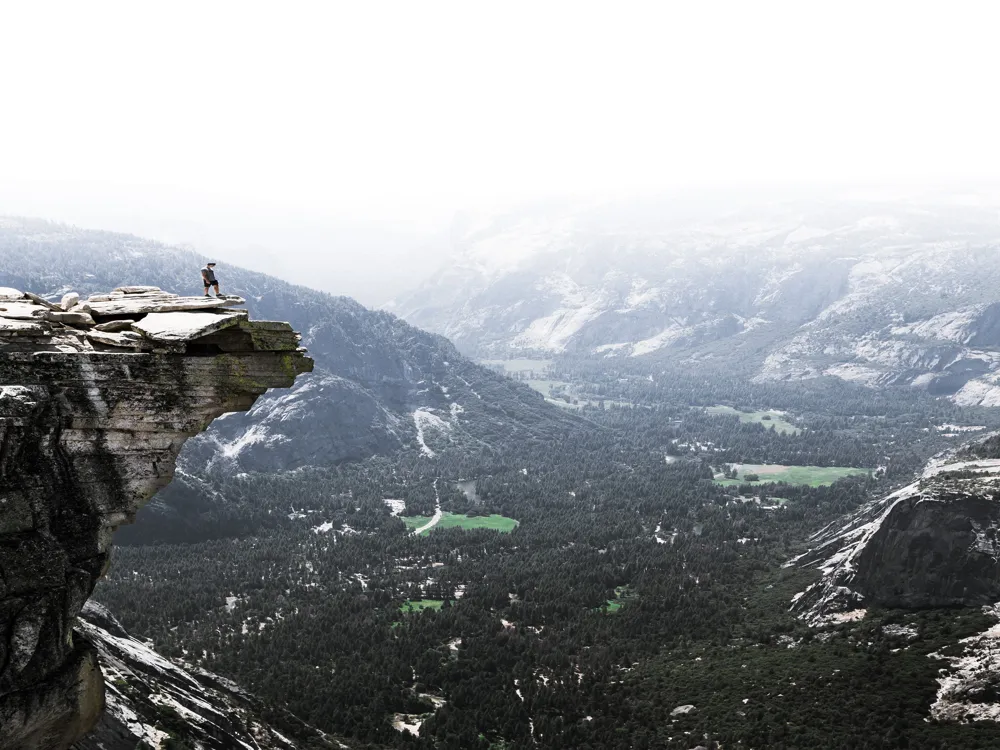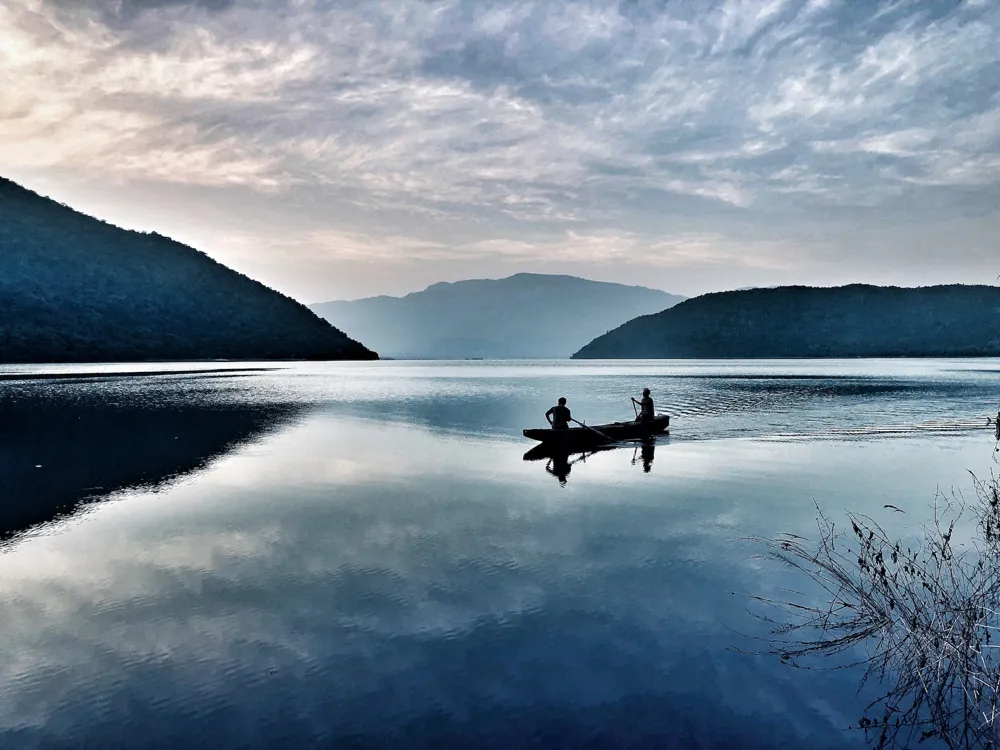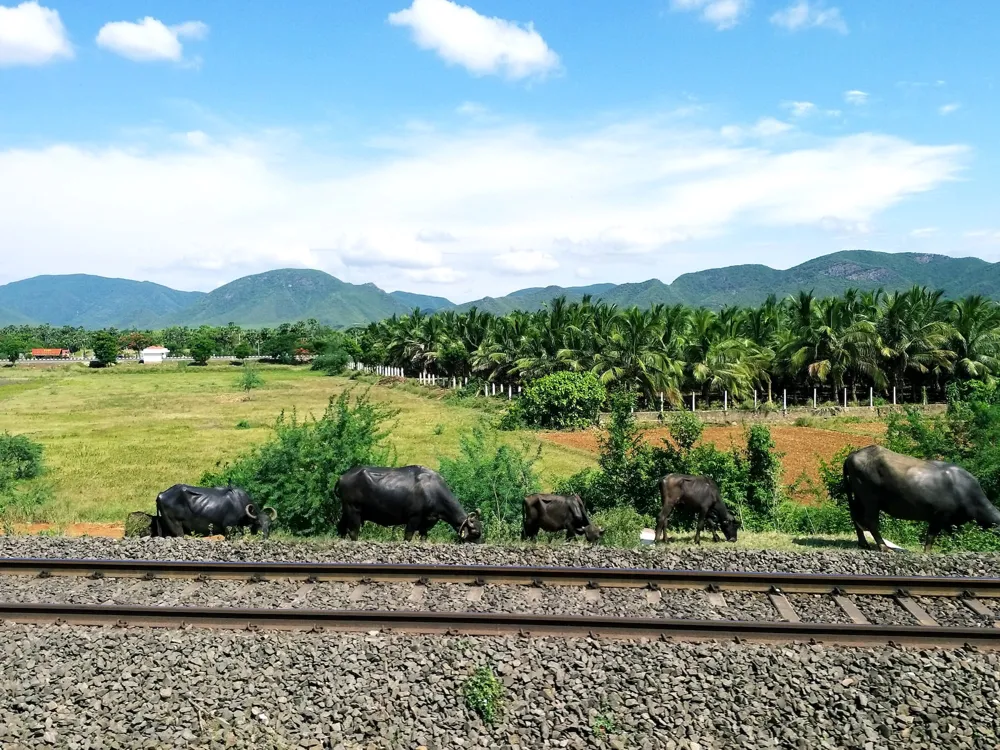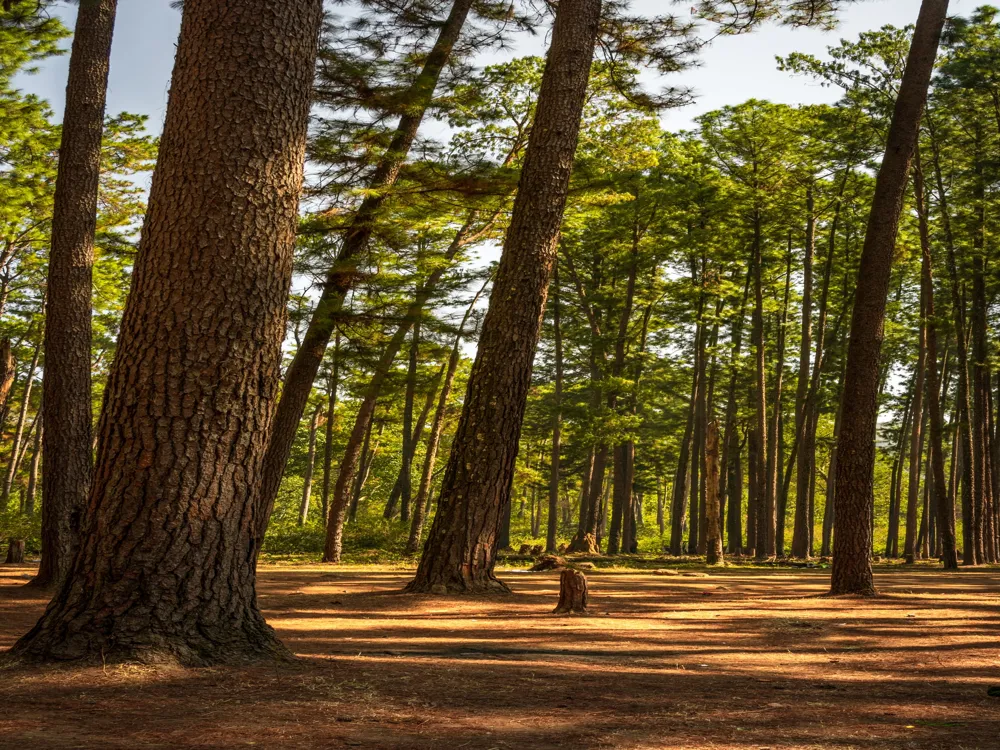Ananthagiri Hills, located in the lush Eastern Ghats of Andhra Pradesh, offers a serene and refreshing escape for trekking enthusiasts and nature lovers. This picturesque destination is not only known for its breathtaking landscapes but also for its rich history and vibrant biodiversity. The trek through these hills is a journey through dense forests, cascading waterfalls, and ancient temples, making it a perfect blend of adventure and cultural exploration. The trekking routes in Ananthagiri Hills vary from easy to moderately challenging, catering to both beginners and experienced trekkers. The trails wind through the thickets of bamboo, teak, and eucalyptus, occasionally opening up to stunning views of the valley. The region's flora and fauna add to the charm of the trek, with a chance to spot rare birds and wildlife. The weather in Ananthagiri is generally pleasant throughout the year, but the best time to visit is from October to March, when the climate is cool and comfortable for trekking. Ananthagiri Hills is also steeped in history, with ancient temples and forts dotting the landscape. The Anantha Padmanabha Swamy Temple, believed to be centuries old, is a significant historical landmark that trekkers encounter on their journey. The temple's architecture and inscriptions provide a glimpse into the region's past. Another highlight is the Musi River, which originates in these hills, offering trekkers a chance to relax by its tranquil waters. The trek in Ananthagiri Hills is not just a physical journey but also a spiritual and cultural experience. It offers a unique opportunity to disconnect from the hustle of city life and reconnect with nature. Whether you are seeking adventure, peace, or a touch of history, Ananthagiri Hills is a destination that promises a fulfilling and memorable trekking experience. The architectural essence of trekking in Ananthagiri Hills lies in the harmonious blend of natural and man-made structures. The trekking trails are designed to offer a sustainable and immersive experience without disturbing the ecological balance of the region. These paths meander through natural terrains, occasionally aided by man-made steps and signages to assist trekkers. Along the trails, trekkers encounter various architectural marvels that highlight the region's cultural heritage. The ancient temples, with their intricate carvings and traditional designs, stand as testaments to the historical significance of the Ananthagiri Hills. These temples not only serve as pit stops for trekkers but also as cultural hubs where one can observe and appreciate the ancient architectural styles of the region. The forts in Ananthagiri Hills, remnants of the region's historical battles and reigns, present a rugged yet fascinating architectural aspect to the trekking experience. Their strategic locations, often atop hills, provide panoramic views of the surrounding landscape, making them popular vantage points for trekkers. The architecture of the trekking routes in Ananthagiri Hills is a subtle reminder of the importance of preserving the natural environment while allowing for human exploration and enjoyment. The routes are carefully laid out to minimize environmental impact, ensuring that the natural beauty of the hills is maintained for future generations. - Ensure to carry adequate water and light snacks to stay hydrated and energized. - Wear comfortable and sturdy footwear suitable for trekking. - Carry a first-aid kit for emergencies. - Inform someone about your trekking plan and expected return time. - Check the weather forecast before planning your trek. - Do not litter. Carry back all your trash. - Be respectful towards the local flora and fauna. Do not disturb wildlife. - Respect the local customs and traditions, especially when visiting temples. - Avoid making loud noises that can disturb the tranquility of the environment. - Use a map or a GPS device for navigation. - Stay on marked trails to avoid getting lost. - Explore the historical sites along the way, but do not tamper with them. - Take breaks and enjoy the scenic beauty of the hills. Ananthagiri Hills is accessible by various modes of transportation, making it a convenient destination for trekkers. The nearest major city is Hyderabad, which is about 90 kilometers away. By Road: The most common way to reach Ananthagiri Hills is by road. The drive from Hyderabad takes about 2 hours. Buses and taxis are also available from Hyderabad and other nearby cities. By Rail: The nearest railway station is Vikarabad, which is about 10 kilometers from Ananthagiri Hills. Regular trains connect Vikarabad to various cities in India. By Air: The nearest airport is Rajiv Gandhi International Airport in Hyderabad. From the airport, one can hire a taxi or take a bus to reach Ananthagiri Hills. Read More: Best Time to Visit Ananthagiri HillsOverview of Trekking in Ananthagiri Hills, Andhra Pradesh
Architecture of Trekking in Ananthagiri Hills
Tips When Visiting Trekking in Ananthagiri Hills
Preparation and Safety
Respect Nature and Local Culture
Navigation and Exploration
How To Reach Trekking in Ananthagiri Hills
Trekking in Ananthagiri Hills
Ananthagiri Hills
Andhra Pradesh
NaN onwards
View ananthagiri-hills Packages
Weather :
Tags : Trekking & Hiking
Best Time for Trekking : November - March
Camping Options : Available
Difficulty Level : Beginner
Timings : 24 Hours
Night Camping Options : Available
Planning a Trip? Ask Your Question
Ananthagiri-hills Travel Packages
View All Packages For Ananthagiri-hills
Top Hotel Collections for Ananthagiri-hills

Private Pool

Luxury Hotels

5-Star Hotels

Pet Friendly
Top Hotels Near Ananthagiri-hills
Other Top Ranking Places In Ananthagiri-hills
View All Places To Visit In ananthagiri-hills
Faq on Ananthagiri-hills
How difficult is trekking in Ananthagiri Hills?
Trekking in Ananthagiri Hills ranges from easy to moderate difficulty, with trails suitable for beginners as well as seasoned trekkers.
Are there any guided trekking tours available in Ananthagiri Hills?
Yes, several tour operators and local guides offer guided trekking tours in Ananthagiri Hills, providing insights into the flora, fauna, and history of the region.
What is the best time of year for trekking in Ananthagiri Hills?
The best time for trekking in Ananthagiri Hills is during the winter and early spring months (October to March) when the weather is pleasant and the surroundings are lush green.
Are there any accommodation options available near Ananthagiri Hills for trekkers?
Yes, there are resorts, guesthouses, and homestays available near Ananthagiri Hills that cater to trekkers and tourists.
Are permits required for trekking in Ananthagiri Hills?
No permits are required for trekking in Ananthagiri Hills. However, it's advisable to check with local authorities for any specific regulations or restrictions.
View ananthagiri-hills Packages
Weather :
Tags : Trekking & Hiking
Best Time for Trekking : November - March
Camping Options : Available
Difficulty Level : Beginner
Timings : 24 Hours
Night Camping Options : Available
Planning a Trip? Ask Your Question
Ananthagiri-hills Travel Packages
View All Packages For Ananthagiri-hills
Top Hotel Collections for Ananthagiri-hills

Private Pool

Luxury Hotels

5-Star Hotels

Pet Friendly
Top Hotels Near Ananthagiri-hills
Other Top Ranking Places In Ananthagiri-hills
Faq on Ananthagiri-hills
How difficult is trekking in Ananthagiri Hills?
Trekking in Ananthagiri Hills ranges from easy to moderate difficulty, with trails suitable for beginners as well as seasoned trekkers.
Are there any guided trekking tours available in Ananthagiri Hills?
Yes, several tour operators and local guides offer guided trekking tours in Ananthagiri Hills, providing insights into the flora, fauna, and history of the region.
What is the best time of year for trekking in Ananthagiri Hills?
The best time for trekking in Ananthagiri Hills is during the winter and early spring months (October to March) when the weather is pleasant and the surroundings are lush green.
Are there any accommodation options available near Ananthagiri Hills for trekkers?
Yes, there are resorts, guesthouses, and homestays available near Ananthagiri Hills that cater to trekkers and tourists.
Are permits required for trekking in Ananthagiri Hills?
No permits are required for trekking in Ananthagiri Hills. However, it's advisable to check with local authorities for any specific regulations or restrictions.













